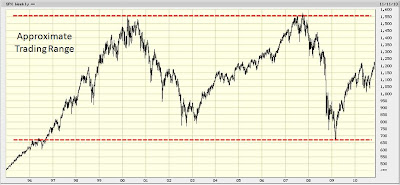I remember the old Star Trek episodes that began with distress calls from some poor spaceship stuck in the Neutral Zone, a vast negotiated area of neutral space designed to separate the Federation of Planets (the good guys) from the Klingons or the Romulans (the bad guys). For the most part, things never went well for the good guys stuck in the Neutral Zone. Captain Kirk, Mr. Spock, and the rest of the Star Trek crew had to fight their way out of many cunningly devised traps set for them by the Klingons and the Romulans in order to get back to safety.
It seems to me that for the past 18 months Pinnacle has also been stuck in the Neutral Zone. For us, the neutral zone is investing diversified portfolios so that they have the same volatility as our investment benchmarks. On a practical level, “neutral” means we haven’t taken a long or short position in risk assets relative to the benchmark. When we are in the neutral zone our incremental approach to changing portfolio asset allocation becomes even more…well….incremental. Small changes in asset class weightings take up a disproportionate amount of time relative to the size of the trades. The timing of even the smallest transactions becomes of paramount concern in the Neutral Zone because the smallest amount of gain or loss due to timing concerns can make huge differences in relative, if not absolute, returns. The importance of investment selection is also magnified when we are neutral to our benchmarks for similar reasons. When our analysts do not make a large relative bet regarding portfolio risk, then all of the nuances of portfolio construction and management become magnified. When you are stuck in the Neutral Zone, owning cash at 0% interest is a major concern. Eclectic managers who underperform for relatively short time periods also become a major concern.
The two worst enemies in the Pinnacle neutral zone are 1) a loss of perspective as analysts become overly focused on incremental decisions, and 2) problems with correlations. Yes, once again I’m carrying on about how asset class correlation can play havoc with short-term portfolio risk and reward assumptions. In the neutral zone any and all of the alternative investments in the portfolio can betray you because by definition their performance can zig and zag differently from the benchmark asset classes at any time. If you are trying to beat a relative benchmark, I suggest you hope for an encounter with Klingons or Romulans, because if you are unfortunate enough to run into peak correlations in the Neutral Zone, your chances of survival are limited.
















